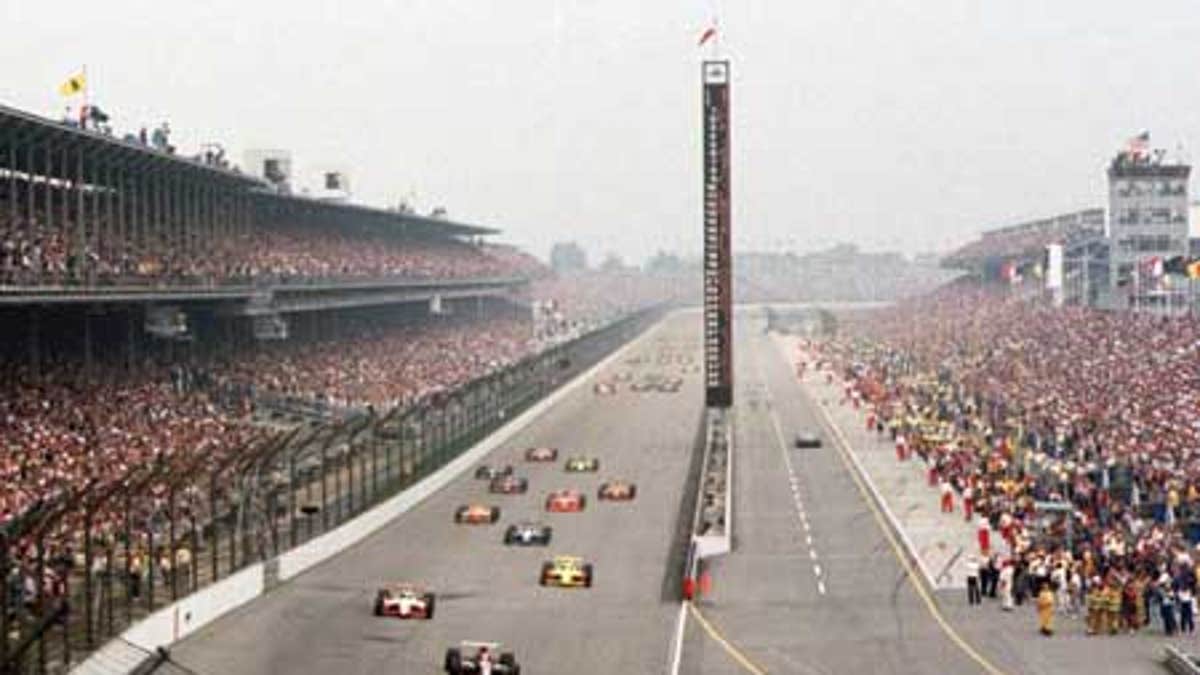
(AP)
INDIANAPOLIS – Indianapolis Motor Speedway has made the reputation of racing greats: A.J. Foyt, Rick Mears, the Unser family.
It's been a testing ground for safety features such as rearview mirrors and seat belts, well before they became commonplace in Americans' everyday lives. It's been a movie set, and the place where Janet Guthrie struck a blow for female athletes by becoming the first woman racer at the Indy 500 in 1977.
And, as of this year, Indy has been part of American driving and racing for a century.
"Not only is this the same joint, the (first) surface is still there ... the crushed rock and tar is still there," speedway historian Donald Davidson said.
The common perception that bricks were used first as the first track surface is as untrue as the speedway's reputation for being a race car-only facility - that was never the intent.
When Carl Fisher and three other partners bought four large plots of farmland for $72,000 in 1908, they wanted to make the speedway a showcase for what was then a major automobile-producing city.
Early cars reached maximum speeds of about 10 mph on the city's dirt roads, so Fisher surmised automakers needed a place to demonstrate whose stripped-down cars were the best.
By 1911, with Indy automakers going out of business, track owners switched gears and started the Indianapolis 500 International Sweepstakes, which gave the speedway and generations of drivers their signature event.
It worked.
Seventy-five thousand out-of-towners from as far away as New York came to Indy and saw Ray Harroun drive a locally built Marmon Wasp to victory in the first Indy 500. The influx of fans never stopped. Tuesday's rookie orientation kicks off practice for the 93rd Indianapolis 500, a race that likely will draw 300,000 people on May 24. The race was shut down during the two world wars.
"The early testing was 'Can we drive this thing from Indianapolis to Greenfield (Indiana) and back,' and then it was 'How can we push these things to the max?'" Davidson said. "The thinking was 'We need a track so we can push them to the limits at all times.' How did you find the weak link? You just stood on it till it broke and then you took it back to the factory to find out how it broke."
Fisher had bigger plans, though, and over the decades the speedway has often transcended auto racing alone.
The first event at the speedway, in fact, was a helium balloon competition. In June 1910, Orville Wright was flying planes over the facility at the United States' first aviation meet. During World War I, the track served as an Army aviation depot to repair planes, and then-owner Eddie Rickenbacker, a World War I flying ace, offered it up for the same purpose during World War II.
By the end of that war, the track nearly ended up on history's scrap heap..
It was nearly destroyed by overgrown foliage and rotting wood, prompting some to contend it should be torn down and converted into a subdivision to help ease the nation's housing crisis - a move that would have forced all those familiar names to attain fame somewhere other than Indianapolis.
Then, in 1945, Terre Huate businessman Tony Hulman Jr. saved it. He bought the track from Rickenbacker and started a major renovation project.
"The infield was just a jungle, and everybody thought the thing was pretty much done for," Davidson said. "The locals said it was falling apart and the wood was rotting and falling down."
Not for long. Throughout the '50s and '60s, the track played an integral role in the city's image. The ABA (and now NBA) franchise that first took the floor in 1967 called itself the Pacers partly because of the Indianapolis' racing reputation. Paul Newman and Joanne Woodward filmed the movie "Winning" at Indy. Afterward, Newman got involved in the sport himself.
Despite the complaints of some, the races have gone beyond traditional Indy cars: NASCAR, Formula One and even motorcyles have or do compete here. To kick off this month's centennial celebration, the speedway held hot-air balloon races.
But to those who grew up around the track, the history and future of the track gets back to the 500.
"The 500 is something that will endure a long time after I'm gone," said Tony George, grandson of Hulman, whose family still owns the track. "You know when I was young, I enjoyed coming out and going to the cafeteria under the old terrace tower and having a Coke or a chocolate malt. That's why I wanted to come to the track."
What will the next century bring?
George, who turns 50 later this year, isn't sure. After spending millions of dollars to build the road course for F1, a road course Fisher lobbied for as part of his grand plan, he wants F1 to return to America. The track also has been involved in a redevelopment plan for the city of the speedway.
Yet George insists his family will fulfill the track's purpose - putting on good races and being a community partner with the city and its businesses.
"I learned about the commitment to be a steward of the institution," George said. "That's how my grandparents did it, and the generations that followed have tried to do the same thing."
Click here for more auto news and reviews from FOX Car Report
